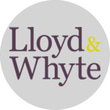- OT
- Life in practice
- Business management
- Buying into an existing practice
The workshop
Buying into an existing practice
Each edition, OT poses a question from an AOP member. Here, we consider what you need to know when buying into a practice

04 November 2022
The scenario
Mark, AOP member
“I’ve been considering opening my own optical practice for a while, and I’ve now been given the opportunity to buy into an existing practice alongside a business partner. As this is completely new to me, what are the financial considerations I need to bear in mind as I consider this offer?”
The advice
Danny James, director of client services at Lloyd & Whyte
There are a few factors to consider if you are planning on buying into an existing optical practice with a business partner.
One of the most important aspects of owning or partially owning your own practice is having a good handle on the financial side of the business.
Cast your eye over the financial success of the business
Request detailed accounts for the practice, as a lender is likely to ask for these if you are looking at borrowing to buy into the practice. If you are not experienced in studying accounts and profits and loss (P&L), it’s best to employ a professional accountant to take a look for you.
Even if you don’t need to borrow capital for becoming a partner in the practice, we strongly recommend you request as many of the financial records as you can as this will reveal any areas where the business is making a loss, areas which might need improvement, and the overall success of the practice.
Make sure you track the (P&L) alongside the balance sheet (this is a statement of the business’s financial state which includes assets, liabilities and net worth) to give an accurate evaluation of the business. The P&L will provide figures for:
- Gross sales
- Net sales
- Cost of products sold
It should also show costs of the tenancy/occupancy, staff labour, and consumables.
Consider all costs
Financial outgoings will all impact on the business, so you should establish the costs for:
- Occupancy – rent, service charges, business rates and utilities
- Labour – wages (include your own salary), National Insurance contributions, and locum cover
- Consumables – bank and credit card charges, stationery
- Practice insurance – insurance for the business and employees
- Equipment – depreciation of equipment and the cost of replacements
Enlist the help of a professional accountant
VAT for opticians and optical practices is complex and nuanced, so employing an accountant with specialist knowledge of the optical industry will be invaluable. If you cannot find an accountant specialising in optometry, you could enlist the help of an accountant with experience in other healthcare sectors who will understand NHS, Eye Care Voucher schemes, direct debit income, and VAT exemption and apportionment related to the optical industry.
Strong business plan
Ask to see the business plan of the practice. This will give you insight into the strategy and focus of the business and how invested they are in its growth. If you are looking to borrow to invest, the lender may want to see a business plan.
A good business plan will have the following sections:
- Ownership
- Key personnel
- Operational strategy
- Financial projections (including sales forecasts)
- Marketing strategy
- Budget
Demand for the business
Monitor the key performance indicators (KPIs) of the business to get insight into its sales performance. KPIs include:
- Number of eye examinations
- Number of referrals
- Number of spectacles and contact lenses sold
- Average order value
- Number of sign-ups on direct debit schemes
Location and outside influences
It’s worth taking into consideration the location of the practice and whether there are competitors in the proximity. Although having competitors nearby could seem to have a negative impact on the business you are considering, it can work in your favour as the street or area can develop a reputation for the place to go for optical requirements, thereby increasing footfall and interest. Consider too the type of customers the practice currently attracts and any factors that could affect trade such as world events, high inflation, and an unsettled economic climate.
Personal relationships and dynamics
Developing and maintaining a good working relationship with your business partner is crucial to the health of the practice you buy into. Establish, from the offset, the responsibilities of each partner and the expectations each person has of each other and themselves, as well as practical aspects such as working hours, salary, and percentage owned.
Make sure you are insured
You will need to be insured and have policies in place for the following:
- Partnership life assurance
- Income protection
- Liability insurance
- Practice insurance
Lloyd & Whyte support
If you would like further advice around the process of buying into an existing practice, Lloyd & Whyte’s independent financial advisers are here to help. We have been advising optometrists for over 20 years and have an in-depth knowledge of this healthcare sector.
To book an appointment with one of our qualified independent financial advisers, call 01823 250750 or email: [email protected]
Lloyd & Whyte (Financial Services) Ltd are authorised and regulated by the Financial Conduct Authority. Registered in England No. 02092560. Registered Office: Affinity House, Bindon Road, Taunton, Somerset, TA2 6AA. It is important to take professional advice before making any decision relating to your personal finances. Information within this article is based on our current understanding of taxation and can be subject to change in future. It does not provide individual tailored investment advice and is for guidance only. We cannot assume legal liability for any errors or omissions it might contain.
Advertisement


Comments (0)
You must be logged in to join the discussion. Log in